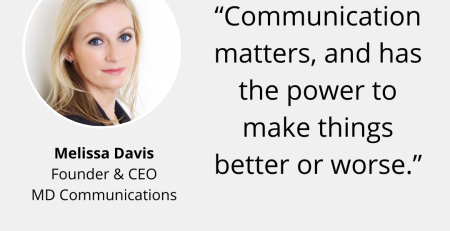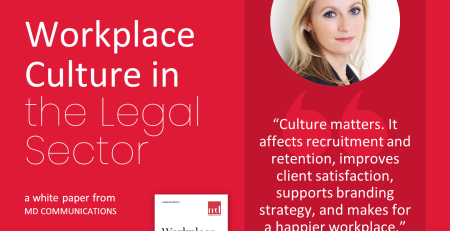Andi Jarvis, Digital Strategy Director at MD Communications, looks at the case of a firm that sued a client for libel over a negative review, providing recommendations on how to respond, and outlining how part of your brand management should include
The recent story of a law firm, Summerfield Browne, winning £28,000 in libel damages from an individual who left it a defamatory review once again raised the issue of how to deal with negative online reviews, and the importance of knowing your clients in the first instance.
In this case, Philip Waymouth left a negative review on Trustpilot after he was left dissatisfied with the service he received. The review wasn’t complimentary for Summerfield Browne, but Mr Waymouth contended it was just his honest opinion.
The judge disagreed and now Mr Waymouth owes Summerfield Browne a sum of about the average UK annual salary.
While the law firm may have won the battle, it’s difficult to say if it has won the PR war. Taking libel action against aggrieved clients is a step that firms don’t take lightly, but one that risks negative reaction in the court of public opinion where the perception of the lawyer brand can already be quite low down on the popularity list.
With more consumers moving online during the pandemic, it has meant the online review industry is booming. With players like Google and Facebook joining Trustpilot and others, how and when should professional services firms engage with these businesses, and how can they protect their reputation from negative reviews?
Keep watching
In any walk of life, there will be clients who find fault in the delivery of the service being provided. Some of these people will post online about their experiences.
When we work with firms on their risk strategy within Comms we always look to have a policy on how online complaints are dealt with.
If you’re not sure where to start, make sure you’re checking the major review platforms on a regular basis. It’s worth actively looking at sites like Trustpilot, Google Reviews, Review Solicitors alongside social media like Twitter, Facebook and LinkedIn to actively find and respond to reviews.
However, the internet is a very big place and it can be difficult to manually stay on top of every mention of your brand name or key people. Luckily, there are a number of free tools that will help keep watch over your brand name.
Give your side of the story
All the major review platforms allow you to respond to comments – positive and negative – about your business. And responding is the number one thing you should do, with a focus on showing willing to reach a positive outcome, and a chance to show understanding and empathy, whether the comment is right or wrong.
If criticisms arise, responding builds trust and credibility for your organisation. To be clear, this isn’t a forum to attack the original post and any substantial complaints should be dealt with through a firm’s complaints procedure. Starting a debate isn’t going to help in the long run, but an acknowledgement of the response and reaching out to achieve a resolution will show the firm to be understanding and focused on client needs.
Is the review inaccurate?
If the review is inaccurate, you need to take slightly different action. Still respond, but your response should firmly, but politely invite an offline dialogue. You can’t disclose confidential information to ‘prove the facts’ online but you have an opportunity to show empathy and a willingness to resolve the issue.
Sometimes incorrect reviews are because the reviewer has just got some details wrong, rather than anything malicious. Their post may be accurate, but the details are off. Humans are often irrational when in an emotional state.
Always invite your client to contact you directly with more details of the issue. This will flush out incorrect information and, importantly, give you the chance to turn around the bad experience.
Your organisation will look proactive, fair and interested in helping. If the complainant doesn’t respond, it shows that you’ve done everything possible to help correct the situation.
Is the review malicious?
In extreme cases, you may suspect the post is malicious and an attempt to discredit your firm.
If this is the case, you should follow the complaints procedure that the review platform has. While this can be cumbersome and slow, the platforms do have a process to flag reviews that are harmful, illegal, name staff personally, aren’t based on genuine experiences, or are about the wrong business.
However, this isn’t just for reviews you don’t like. They have to fit the limited criteria for incorrect reviews and any requests that don’t fit that criteria will be rejected.
Collect positive reviews
A proactive step you can take is to actively collect reviews. If you offer a good service, collect the positive feedback on the review platforms.
This can be used proactively in your marketing, but also acts to drown out any negative reviews. If you’ve got two negative and 55 positive comments, the negative two look like outliers. If you’ve got three reviews and two are negative, it looks like you don’t know what you’re doing.
Focus on client service
Before you actively start collecting positive reviews, you need to make sure you’ve got your house in order and have a plan to use the feedback. Is your plan to gather fantastic quotes for websites and pitches or to gather information and data to improve client services?
It goes without saying that client feedback is crucial, but rather than go straight to a public platform, firms should undertake a strategic client listening exercise first, to gather actionable data and tailor their approach, client service delivery and market offering. A public rating platform will then support the promotion of your brand and capability via online reviews.
Take it offline
Sometimes customer service does fall short of the standards we expect from our teams. Where the complaint is valid and there’s a need to engage, take that discussion offline as soon as possible.
Still respond, but get the individual on the phone or meet in person (when possible) to discuss the issue. Where possible, try to make that contact a personal one – email is rarely a great platform for dealing with complaints, speak to the person and hear what they have to say.
In my experience, once you’ve fixed the problem for the client, they often remove the original post or add a follow-up explaining how happy they are with the resolution.
Reviews are a symptom not a cause
The final point is one that can be quite difficult to get support for internally – negative reviews are often a symptom of a bigger problem.
While it’s tempting to blame the reviewer for their negative comments and convince yourself that they are wrong, there is often much more to be gained by looking at what went wrong to get to that stage.
No business (except the odd airline!) sets out to upset customers. No client comes to you for a bad service. Somewhere between the client coming to you and then leaving a bad review, something went wrong.
Almost every bad review I’ve ever seen has been caused by a gap between the client’s expectations and the service delivery.
Always use a negative review as valuable insight – it’s free consultancy that highlights areas of your business you can improve.
Could you have managed the situation better? Does your client management process need improving? Are the client’s expectations being managed early enough? Is your business development process overpromising?
Whatever the reason your client has ended up dissatisfied with your service, it’s important to look for the valuable lessons you can learn from what they have to say.
Andi Jarvis is the Digital Strategy Director at MD Communications. He has advised the Northern Irish government, European Union and multiple law firms across the world on how to effectively use digital marketing and social media.
Find out more about our training or download our guides












